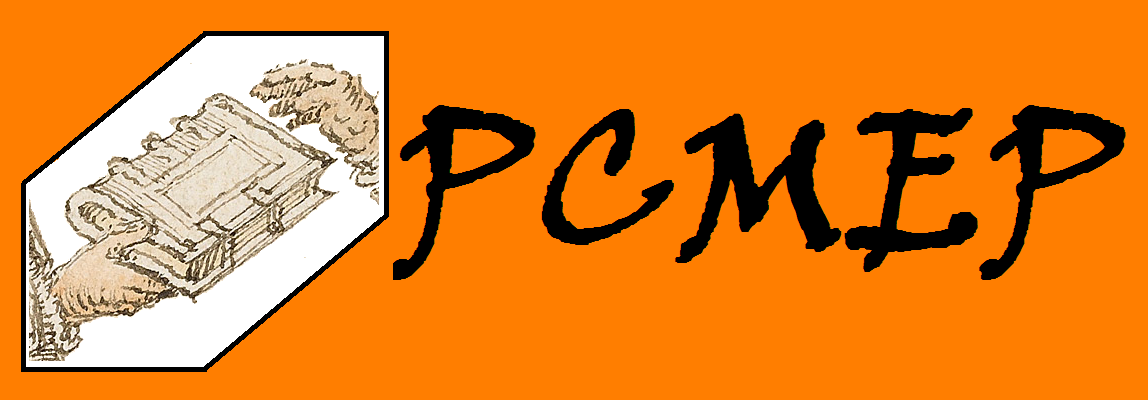The Parsed Corpus of
Middle English Poetry (PCMEP)
PCMEP Text Information
Love Ron
Back to PCMEP texts
About the text:
About the edition and manuscript base:
About the file:
Other:
| Text name: | Love Ron |
| Alternative names: | Love Rune; Friar Thomas de Hales' "Love Ron"; A Luue ron; A maid Christ me bid yerne |
| Content: | The Love Ron is about the perfect love between a virgin and Christ as opposed to the fleeting nature of worldly love. The poem begins with a Christian maiden's request to have a love poem composed for her. The poem ends with the instruction to recite it frequently. It is a pastoral work composed by Thomas of Hale, a Franciscan friar. |
| Genre/subjects: | love toward Jesus, love, the divine and the human |
| Dialect of original composition: | West-Midlands "This notable piece is of the south-west" (Wells 1916: 529). The second name of the author, Hales, probably refers to his place of origin, Hailes in Gloucestershire or Hales Ower in Worcestershire (Brown 1932: 198, Greer-Fein 1998). Hill (1964: 327-30) believes that there is a reference to Thomas Hales as a chorister at St. Mary's, in Hereford. The anecdote is found in a book traceable to the second quarter of the thirteenth century. This, too, would show that Thomas Hales was from the West-Midlands. The Love Ron seems to follow a passage in the Ancrene Riwle (from before c. 1220) for the description of the ideal lover (Brown 1932: 199). The poem also uses ideas similar to those found in Hali Meidhad (from before c. 1225) (Wells 1914: 236-7). These two potential source texts were composed and available in the West-Midlands, which may further substantiate the claim that the Love Ron originated in this dialect region as well. |
| Date of original composition: | 1225-1272 "The Luue-ron must have been composed between c. 1225 and 1272. [...] [T]he rubric states the author is Franciscan, the lyric must have been composed after the coming of the Order to England in 1224. Subsequently the two references in the text to Henry vre kyng (line 82) and Henri king of Engelonde (line 101) can refer only to Henry III, who reigned from 1216-72" (Hill 1964: 325). The poem could plausibly fall into PCMEP periods 1b (1200-1250) or 2a (1250-1300). The piece has been grouped into the earlier period. |
| Suggested date: | 1250 |
| PCMEP period: | 1b (1200-1250) |
| Versification: | twenty-six stanzas, eight-line, abababab; plus one final couplet, aa |
| Index of ME Verse: | 66 (IMEV), 66 (NIMEV) |
| Digital Index of ME Verse: | 104 |
| Wells: | 13.173 |
| MEC HyperBibliography: | A Mayde Cristes |
About the edition and manuscript base:
| Edition: | Brown, Carleton F. 1932. English Lyrics of the XIIIth Century. Oxford: Clarendon. 68-74. |
| Manuscript used for edition: | Oxford, Jesus College 29, Part 2, ff. 187r-188v |
| Online manuscript description: | LAEME Manuscripts of the West Midlands (item 18) |
| Manuscript dialect: | West-Midlands The scribal dialect has been localized to Herefordshire (McIntosh et al. 1986: 199). |
| Manuscript date: | s. xiii-ex The manuscript dates from "c. 1275" (Wells 1916: 529). The manuscript was made in the late thirteenth century (Ker 1963: ix, xvi). "This part [of the manuscript] was written in one hand between 1256-1300" (Hill 1964: 321). The online version of the Middle English Dictionary dates the manuscript as a1300. |
About the file:
| File name: | M1b.LoveRon |
| ID: | LoveRon,w.x.y.z: w=token, x=page, y=line, z=stanza {[Stanza_1]-[Stanza_26], [Final_Couplet]} The |
| Word count: | 1,274 |
| Token count: | 119 |
| Line count: | 210 |
Other:
| General notes: | No. [43] in Brown's (1932) edition. Thomas Hale is mentioned in two Latin letters by Adam Marsh. They were probably written between 1252 and 1257 (Hill 1964: 326-7). |
| Remarks on parses: | The line breaks follow Brown's (1932) edition. The Latin incipit, Incipit quidam cantus quem composuit frater Thomas de hales de ordine fratrum Minorum, ad instanciam cuiusdam puelle deo dicate, has not been included in the file. Line 105 contains the expression Vouh ne gray. According to the Middle English dictionary, it is here used as a noun in combination with a colour term and means 'a kind of particolored fur.' The expression has been tagged as a single noun. |
References
Brown, Carleton F. 1932. English Lyrics of the XIIIth Century. Oxford: Clarendon.
Greer-Fein, Susanna. 1998. Moral Love Songs and Laments. Kalamazoo, Michigan: Medieval Institute Publications.
Hill, Betty. 1964. 'The "Luue-Ron" and Thomas de Hales.' The Modern Language Review 59.3. 321-330. (available online)
Ker, Neil R. 1963. The Owl and the Nightingale: Facsimile of the Jesus and Cotton Manuscripts. EETS o.s. 251. Oxford: Oxford University Press.
McIntosh, Angus, Samuels, Michael L. & Benskin, Michael. 1986. A Linguistic Atlas of Late Medieval English. Aberdeen: Aberdeen University Press.
Wells, John E. 1914. 'A Luue Ron and Of clene maydenhod.' The Modern Language Review. 9. 236-237.
Wells, John E. 1916. Manual of the Writings in Middle English, 1050-1400. New Haven, CT: Connecticut Academy of Arts and Sciences. (available online)
